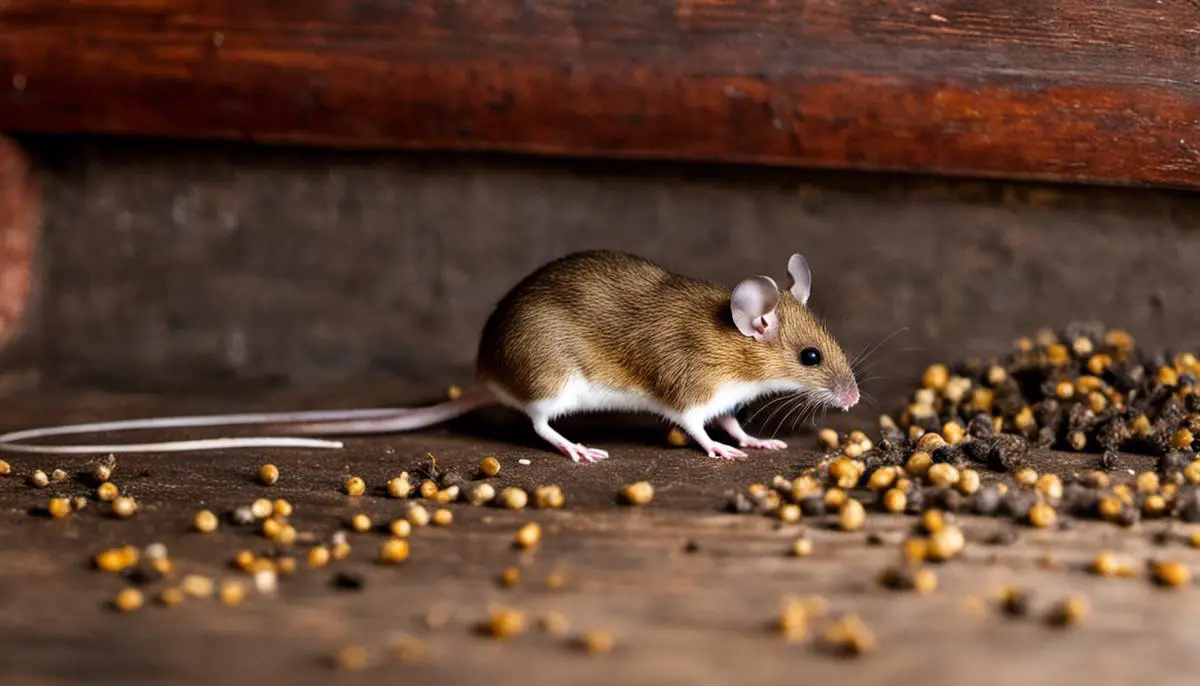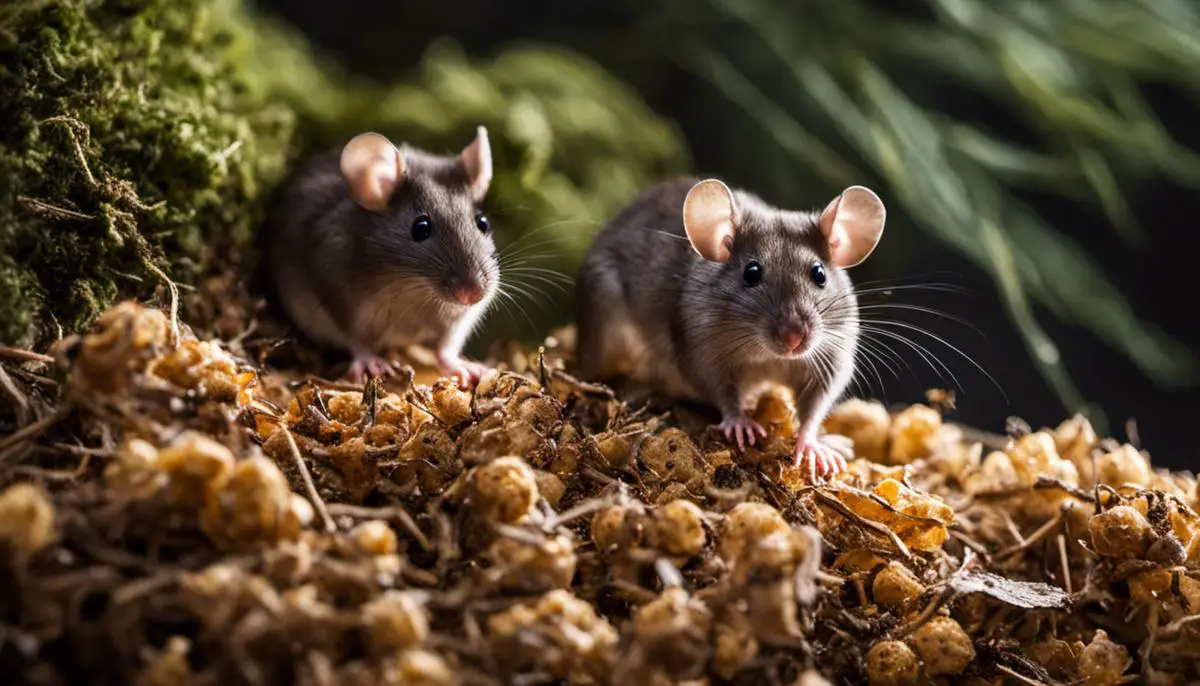In any given home, the silent nuisance of a mouse infestation can rapidly turn into a full-blown problem, posing both health risks and structural damage. A clear understanding of the telltale signs of these unwelcome guests, as well as effective preventive measures, can prove vital in tackling this issue. From the usual droppings in corners to evidence of nesting and gnawing, the small indicators offer practical advice on the presence of mice. Learning to identify these signs, paired with implementing preventive measures such as sealing cracks and maintaining cleanliness, can help ward off this troublesome menace. To address an existing problem, knowledge of do-it-yourself mouse traps and home-based pest control methods can provide the necessary tools to reclaim your home.
Identifying Signs of Mouse Infestation
Unwanted Guests? Spotting a Mouse Infestation in Your Home
Oh, how we love our homes! It’s our sanctuary, a comforting haven that houses our loved ones. We strive to keep it clean, cozy, and most importantly – safe for our little ones. But there’s a tiny wrinkle that occasionally makes an unwelcome appearance – a mouse infestation. Not only are these little critters unsanitary, but they pose potential health risks too. So, how can one be certain if there’s a mouse infestation at home?
-
Scrutinize for Droppings
It’s not the most pleasant start to the topic, but mouse droppings are the most common sign of an infestation. They are generally small and dark, similar to the size of a grain of rice. Pay special attention to your kitchen area, as food sources generally attract them.
-
Search for Gnaw Marks
Mice have sharp incisors that grow continuously, and gnawing helps them keep those teeth in check. Resultantly, they might leave tiny bite marks on food packages, furniture, or wiring. If you notice any unexplained damage around the house, you might be dealing with a mouse situation.
-
Listen for Noises
Late at night when the house is quiet, you might hear light scratching sounds, the scampering of tiny feet, or even squeaking from behind your walls or ceilings. These noises can be a strong indication of a mouse infestation.
-
Check for Nesting Material
Mice prefer to nest in secluded, safe areas. They use shredded paper, fabric, or plant matter to build these cozy hideaways. If such materials are found randomly strewn about, especially in hidden spaces, a mouse might be making a home for itself.
-
Notice a Peculiar Smell
An unusual, lingering musky odor might be another sign. Typically, mice have a distinctive smell, and if your four-legged furry family member starts to become a bit too interested in a spot, it might be worth investigating.
-
Mouse Tracks and Runways
Accumulated dust can reveal the presence of mouse tracks or tail marks. A more precise way to identify this would be by utilizing a flashlight shining at a low angle towards the potential track. Mice tend to use the same routes repeatedly, leaving behind a trail for the keen observer.
-
Live or Dead Mice
This might seem obvious, but spotting live or dead mice during the day can be a telltale sign of a growing infestation. Mice are primarily nocturnal creatures, so daytime appearances could suggest the population has increased to a point where some members are forced to venture out in the open.
While we all enjoy a bit of Tom and Jerry, having your home serve as the venue is not the best scenario. If you’ve identified any of these signs, it would be beneficial to contact a pest professional immediately. Here’s to a safe home, always!

Preventive Measures against Mice Infestation
Deterring Mice from Making Your Home Theirs
Maintaining the safety and integrity of your family’s dwelling is always at the forefront of any parent’s mind. And one common, albeit unwelcome household guest, is the diminutive yet disruptive mouse. Rather than dealing with an infestation after it happens, wouldn’t it be far more convenient to prevent the infestation in the first place? Here are some easy-to-follow tips that will help protect your home from a potential rodent invasion.
First and foremost, seal up potential entry points near the ground level of your home. Mice are skilled climbers and can squeeze through the smallest of holes, only needing a space the size of a dime. Inspect the foundation of your home and close off any gaps or cracks using a robust material like metal or concrete. Weather stripping or door sweeps for doors and windows can also deter potential rodent entry.
Next, tidiness is key. Mice are attracted to areas that provide plenty of hiding spots, so declutter your home from top to bottom. Stacked boxes or piles of clothing offer perfect nesting opportunities. Make sure your garage, attic, and storage spaces are kept neat and organized.
Your yard can also disrupt a mouse’s plans of moving in, so pay attention to the exterior charm of your home. Regularly trim the shrubs and plants against your home’s walls. The nearness of foliage may inadvertently create a cozy pathway for rodents to navigate towards your home. Removing comfortable exterior hideouts will significantly dissuade any fuzzy intruders.
Furthermore, be mindful about food storage and waste. Mice are opportunistic feeders and will munch on whatever is conveniently available. Sealed containers are a must when storing food items, especially grains and pet food. Reinforce this by ensuring that your trash is always properly covered. Household waste is a haven for rodents looking for a free and easy meal – deny them this luxury.
Lastly, consider getting a cat or encouraging natural predators. Despite sounding like an old wives’ tale, cats are mighty mousers and their scent can serve as a significant deterrent. And owls love to feast on mice, so installing a wooden owl box can invite these natural predators to your property.
Understanding, and preemptively dealing with the variables that can lead to a mouse invasion, realistically reduces the chance of unwelcome rodents becoming roommates in your home. Following these practical tips can provide peace of mind and create a safe, clean living environment for your family.

DIY Mouse Traps and Pest Control
Mouse-Proofing Your Home with DIY Traps and Pest Control Methods
Sometimes, despite all our best efforts, these little critters still find a way to sneak into our cozy spaces. Not to fret though; There are several DIY mouse traps and pest control methods you can use to regain your peaceful space. And remember, it’s not just about trapping mice, but also preventing them in the first place.
Help serve the community’s need for safe, family-friendly, cost-effective solutions by considering these DIY tips and pest control techniques.
You might be surprised how a little bit of peanut butter on an ordinary snap trap can have mice flocking. They adore the scent and will likely risk a taste. Set these traps close to walls, as mice tend to avoid open spaces. And remember to always place the baited end of the trap towards the wall to increase your chances of a catch.
Another creative yet effective DIY trap uses a bucket, a wire hanger, peanut butter, and an old soda can. Balance the soda can on the wire hanger stretched across the top of the bucket. Smear a little bit of peanut butter on the can. Mice will attempt to reach the tantalizing treat, only to spin on the can and drop into the bucket below.
Many natural substances and herbs can deter mice with their smell. Peppermint, clove oil, and cayenne pepper are among the top choices. Mice detest the strong smell, and these scents can help drive them away. Plant these herbs around your garden’s edge or use their essential oils mixed with water as a spray around your home.
Whether the standard short-haired tabby, the elegant Siamese, or the exuberant Maine Coon cat, a feline friend can be a natural mouse deterrent. Mice can identify even the slight odor of a feline and will take pains to stay clear. Hence, having a cat around the house can serve as an efficient mouse control method (plus, who can resist the company of a furry companion).
If the thought of killing mice doesn’t sit well with you, using a live-catch trap is a more humanitarian alternative. These traps lure mice in with bait, then the door closes behind them without injury. Once captured, the mice can be relocated safely outside your premises.
Ultrasonic pest deterrents emit high-frequency sounds unnoticeable to humans but incredibly irritating to mice. However, this method can sometimes present a problem if you have other pets like dogs and cats, as they might also be sensitive to the noises.
Armed with these DIY techniques and pest control methods, you can help keep your home mouse-free. And remember to also exercise preventive measures alongside these methods to ensure an entirely mouse-free environment.
Remember, while pests are, indeed, a nuisance, creative and compassionate solutions are available. And, as we spread these solutions, we build a more harmonious and understanding relationship with the world we share with these little creatures. Thanks for being here on this journey together!

While the battle against mouse infestation is one that may seem daunting at first, victory is absolutely possible with the right tools and knowledge. Understanding the signs of an infestation, taking proactive steps to prevent it and knowing how to employ effective DIY solutions are the key battles in this war against mice. Maintaining a clean and sealed home environment forms the first line of defense, while homemade traps and pest control methods serve as valuable tools in an active fight. Remember; you’re not alone in handling this situation – thousands have successfully ended their mice problems using these techniques, making their homes mice free zones effectively. So take these lessons to heart, incorporate them into your infestation strategy, and seize back control of your home!








